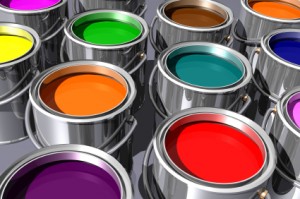Does paint have to be toxic? Whether they’re everyday oil or latex hues used in residences or high performance tints made specifically for commercial properties, paints represent an environmental challenge and a health hazard on a number of levels. But as the movement toward ecological responsibility grows, so too does the demand for a paintthat will prove less harmful to the people who are exposed to it, the air, and the earth itself. And it is slowly becoming a reality.
The biggest environmental hazard posed by interior and exterior paint, whether it’s the kind sold at your neighborhood Home Depot or the high performance variety used in commercial properties, is the toxic fumes. These fumes, known as volatile organic compounds (VOCs), aren’t just emitted upon application. They can be released for years, posing an ongoing health hazard, not to mention ecological harm. But manufacturers are gradually working to decrease or diminish the level of VOCs in commercial paint.
Lower levels of VOC are one way to ensure paint keeps up with the movement toward ecological responsibility. Other manufacturers of standard residential and high performance paint also offer some with reduced levels of other chemicals. There are even paint substitutes that use natural substances for chemicals. Now you can find eco-friendly paint in a range of colors that use materials like water, beeswax, soy, or even milk. They may not suffice for business and industrial settings that require durable, high performance wall coatings, but for simple residential jobs, these offer a healthier alternative to highly toxic chemicals.
Homeowners who are truly committed to environmentally responsible decorating can go one step further and mix their own wall coatings using entirely natural materials. Whitewash, using just clay powder, flour, and water, has been used for centuries. But not everyone wants to go quite that basic. For those who want a bit more variety (or high performance) in their wall coats, a number of low-VOC, allergy-sensitive washes are available for purchase to which an array of natural pigments can be added.
Environmental sensitivity is becoming the norm rather than the exception in everything from manufacturing to hospitality. It’s nice to know that interior design is staying on top of the ecological trend, with the use of renewable and sustainable resources. The commercial and high performance paint market has been a bit slow to catch up, but it’s finally starting to realize that toxic chemicals and living, breathing organisms perhaps are better kept apart.
Wolf-Gordon can supply all your high performance paint and other home designing needs. Visit in person at one of the following showroom locations: Los Angeles Showroom Pacific Design Center at 8687 Melrose Ave., Suite BM5 Los Angeles, CA 90069; Chicago Showroom Merchandise Mart at #10-161 200 World Trade Center Chicago, IL 60654; or visit http://www.wolfgordon.com/. To obtain samples or for general information, call 800-347-0550 or email info@wolf-gordon.com.


